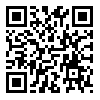
Journal of Emergency Health Care
Formerly known as: International Journal of Medical Investigation

Volume 14, Issue 1 (2-2025)
J Emerg Health Care 2025, 14(1): 0-0 |
Back to browse issues page
Download citation:
BibTeX | RIS | EndNote | Medlars | ProCite | Reference Manager | RefWorks
Send citation to:



BibTeX | RIS | EndNote | Medlars | ProCite | Reference Manager | RefWorks
Send citation to:
Mohammadi M, Gharehkhanaloustani S. Application of Telemedicine in the Care and Follow-up of Ophthalmic
Patients: A Narrative Study. J Emerg Health Care 2025; 14 (1) : 50
URL: http://intjmi.com/article-1-1340-en.html
URL: http://intjmi.com/article-1-1340-en.html
Faculty of Medicine, Far Eastern Federal University, Vladivostok, Russia
Abstract: (234 Views)
Background: With advances in communication technologies and the expansion of digital tools, telemedicine has become a modern approach in healthcare delivery, gaining particular importance in medical specialties such as ophthalmology. Many ocular diseases — including glaucoma, macular degeneration, diabetic retinopathy, and ophthalmic emergencies — require continuous follow-up and monitoring. However, geographical barriers and a shortage of specialists have limited patient access to timely and specialized care. Telemedicine, through remote consultation, digital imaging, and online monitoring, provides a practical solution to bridge this gap. Objective: This study aimed to review and analyze existing evidence on the application of telemedicine in the care and follow-up of ophthalmic patients, focusing on its advantages, limitations, and implementation challenges. Methods: This narrative review was conducted by searching major scientific databases including PubMed, Google Scholar, and ScienceDirect using keywords such as Telemedicine, Teleophthalmology, Eye care, Follow-up, and Patient monitoring. Articles published between 2010 and 2025 were reviewed, and 17 eligible studies were selected for detailed analysis. Findings: esults indicated that telemedicine improves access to specialized eye care, reduces in-person visits, saves time and costs, and increases satisfaction among patients and healthcare providers. In several hybrid models, the quality of care was found to be nearly equivalent to face-to-face examinations. Telemedicine has shown notable success in diabetic retinopathy screening, glaucoma monitoring, and emergency ophthalmic management. Nevertheless, challenges such as low image quality, high equipment costs, limited infrastructure, and user resistance to adopting technology were frequently reported. Conclusion: Teleophthalmology can serve as an effective complement to conventional eye care. Strengthening digital infrastructure, training healthcare professionals, improving image quality, and developing clear legal and ethical guidelines are essential for its successful integration into healthcare systems.
Article number: 50
| Rights and permissions | |
 |
This work is licensed under a Creative Commons Attribution-NonCommercial 4.0 International License. |


